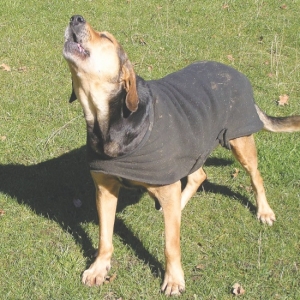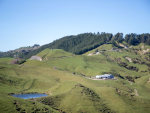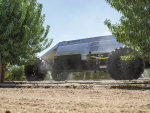Out came the sewing machine. Being a competent designer and sewer, a dog coat was a breeze. The response was incredible: within a couple of days she looked a different dog – her eyes were bright and no longer sunken, and there was a big improvement in her condition. Within two weeks she was in full bloom.
Being a horse person I’ve always been aware of the saying “a cover is as good as a feed” and since my first creation, I have made quite a few coats for my dogs over the years. I don’t normally cover them, because I bump their food up considerably prior to and during winter, ensuring hips and ribs are well covered, but if one is struggling due to a particularly fine coat, I’ll whip up a cover.
There are some very good dog coats available. They may appear to be expensive but the comfort dogs receive through freezing winter nights means valuable nutrition isn’t wasted on warmth and can be utilised holding condition and energy.
If you think that’s a bit over the top, do at least try it on dogs that are old, have arthritis, or are sick and convalescing over winter: it really helps with recovery.
What are my thoughts on bedding in kennels? I’m all for warmth comfort and cushioning, however I’m more against bedding than for it. Here’s why.
Most materials used for dog beds absorb moisture and working dogs regularly get wet in winter. They’re put away at the end of the day wet and covered in mud. Similarly if they are tied up and it is raining, they get wet when stretching their legs or wanting to be let off. In a motel there is the same problem, unless the run is weatherproofed, and how often do you see that?
The damp dog goes in and out of the kennel, and the bedding absorbs the moisture and soon gets saturated. The dog is then lying on wet bedding, which must be bad for joints. Before long the floor boards are wet and going mouldy.
I know some people put the bedding on top of the kennels to dry, but there aren’t enough hot sunny days. Unless you regularly swap spare dry beds for each kennel, I feel the dogs are better on wooden floors; they can lick themselves clean and dry, and their body heat dries the damp flooring.
Some people use old carpet, or sacks full of wool, but it very quickly becomes sodden – I know I’ve tried it. Others put hay or straw in the kennel; it too isn’t immune to moisture, and there is always the risk of a dog ingesting too much when eating, and becoming constipated.
I have wondered about heavy duty rubber matting. It wouldn’t absorb water but it would give the dog’s joints some cushioning, plus it would be tough, not very palatable and may last quite well.
I’d be very interested in hearing from anyone who has solution for working dog bedding: I’ll happily pass it on so other dogs may benefit.
• Anna Holland is teaching people dog training. For more information www.annaholland.co.nz or Ph 07) 217 0101 or This email address is being protected from spambots. You need JavaScript enabled to view it.

















